Earlier this year, Cycling Tips published a fantastic guest post by George Mallory who climbed Mt. Donna Buang 10 times in a single day. Now, George is in Italy riding up and down some amazing mountains and he’s written the following post about climbing the terrifying Monte Zoncolan — one of the most challenging climbs in the world.
From the town of Ovaro, the climb to the summit is 10.1km long at an average gradient of 11.9%! If that wasn’t scary enough, the final 6km of the climb rise at an average of 15%. This isn’t the first time George has come face-to-face with Monte Zoncolan — this time around George is gunning for a PB …
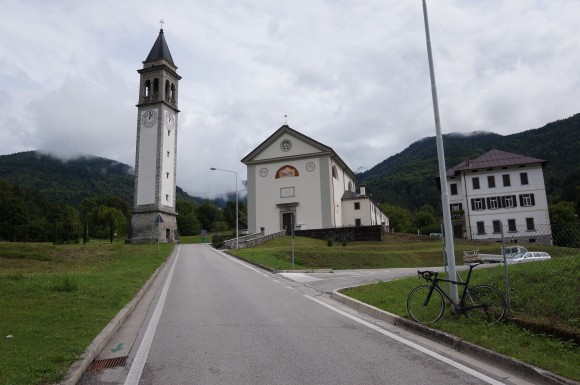
The weather forecast looks promising so I drive over the hill to Ovaro, stopping occasionally for photos. At Ovaro, I find a parking spot and assemble the bike. I get the saddle height right this time — last time it was 7mm too high.
I do a quick warm-up on the other side of the valley with several really effective breath-holds. Now it’s back to the car for final preparations. I dump all my excess baggage. This means no gloves, no arm-warmers, no water bottle, no cage, no spare tube, no car key, no helmet. Attached to the bike are: Garmin 500, mini-pump, tire lever, patches and the only ‘non-esseential’: a mini-front light for use in the three tunnels on the way up.
I munch down some glucose sweets, and it’s time to go. I hope those rain clouds are only pretending. I pedal calmly to the start. A allow myself a few minutes of deep breathing while a wedding procession goes by in the main street. Ok George, this is it! Wind up into the start, hit the ‘lap button’, start the stopwatch, and … go go go!
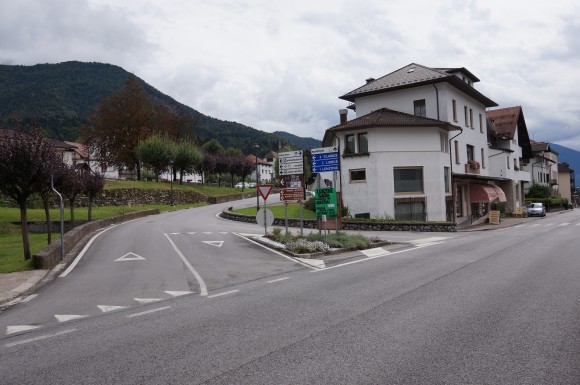
I speed along the initial false-flat before taking it slower up to the church (see top photo). Now the gradient bites and it’s a grind up to Liaris, roughly 1.5km into the climb. I’m managing 11 km/h as I look for the right turn and anticipate the 300m of flat road. I turn the corner and now it’s time to attack. Full power! Big ring! Speed!
A quick glance down shows I’m at 39 km/h. But then it’s steep again and I gear all the way down into the 27. My legs fill with lead. Ah yes, here’s the first left turn. I’ve been riding for 11 minutes dead — that’s 40 seconds ahead of last time. Good, but I wonder what that improvement really means. Am I in contention for a PB?
Now that I’m through Liaris, it’s time for the hard stuff. From here on up there are few really distinct features. There are steep corners followed by steep straights. I attack each corner on the inside and settle down into the steep ramp that follows. There are no cars — the road is mine. It’s wet, but only just. It’s nice and cool.
With the gradient well above 10% I’m battling to keep my speed above 7 km/h. But there’s nothing I can really do but keep cranking. I play with the Garmin. See how the gradient oscillates between 15% and 22%? This can’t really be 22% – surely?
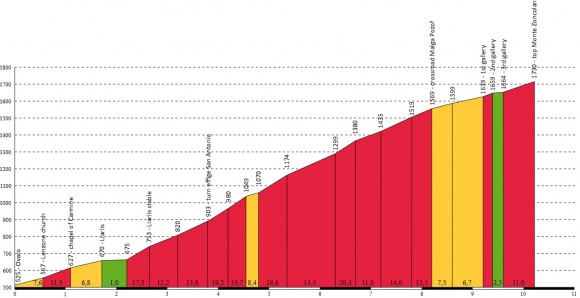
I invent a new game: can I do the next 100m in under a minute! (That is, at 6km/h) Oh my god this is hard. Nothing for it but to keep cranking. I focus on pedalling in circles. On and on it goes.
I seem to recall that the gradient eases up at 6km. But I’m now at 7km and it’s not feeling any easier! Let’s see how I’m going. If I want do the climb in an hour, I need an average speed of roughly 10km/h. At 7.5km my time needs to be 45 minutes or less. Look at that — my average is 9.9 km/h! Wow!
Oh, but hang on — the 300m false-flat at Liaris has skewed my average, so scrap that. But then again, my PB is 63 minutes, not 60. So I’ll allow an extra 2 minutes on top of the 45 at the ¾ mark. So now I’m here, 7.5km into the climb and I’ve been going for 47 minutes 30 seconds. Seems OK. Pity I don’t have split times.
Keep cranking! Circles. That final false-flat is coming soon. Here it is. Big ring and … attack! Ah, there’s a cyclist ahead. Great, a rabbit. Yes I’m closing the gap. He’s not wearing a helmet either. Bonjourno. Move past.
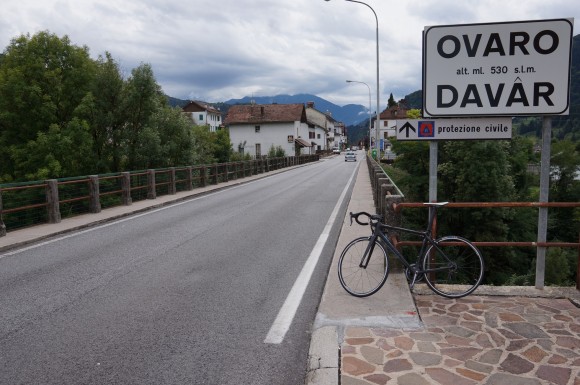
Here’s the first tunnel. Light on. Cyclist right behind me. God it’s dark in here. Glad I brought the light! Crank! Next tunnel. This one is shorter. Next tunnel. Time still under an hour. PB coming up, surely?!
Crank! OK, last 400m coming up. Remember the insanely steep corner! Cyclist still on my wheel. Here’s the corner. Wow, it must be 40% for those 2m there. Out of the saddle, take it tight! Cyclist behind takes the outside and is dropped. And … attack! I’m breathing at double pace, gasping for air. The end is just beyond this final bend … COME EFFING ON!!! POWER!!!
And … stop. I hit the Garmin and my watch. Unclip. Elbows on bars. Gasp. Oh my god! 1 hour and 20 seconds!
Have you got a climbing-related cycling story you’d like to share? Perhaps you’re out in the French Alps climbing every col in sight. Maybe you’ve just snaffled a PB on your favourite local climb. Or maybe you just completed your first ever climb. Either way, we’d like to hear from you. Get in touch with Matt with all the details.
The Ovaro to Monte Zoncolan climb can be seen in its entirety in the video above, taken from stage 15 of the 2010 Giro d’Italia. The leaders start the climb (as seen in the second photo from the top) 2 minutes 29 seconds into the video.
The winner of the stage, Ivan Basso, completed the climb in a truly scary time of 40 minutes 45 seconds. He averaged 395 watts and 14.7km/h throughout the climb.
Further reading:
- Monte Zoncolan – ClimbByBike
- A Closer Look: The Monte Zoncolan – PezCycling News

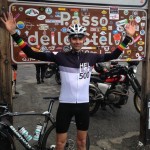
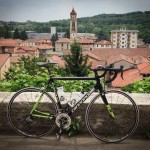
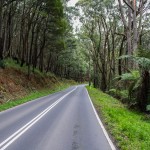
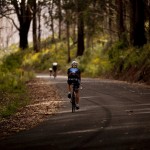
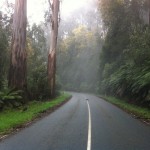
Aaron
I had my own bike (with a 34 & 11 to 27 cassette) and a hire car. I’m ignorant about bike hire opportunities and trains, sorry. Good luck mate! George
Great reading! My HR was just below LT during the reading of this.
I’m planning a family (I repeat, family) holiday to northern Italy in September and therefore I’m leaving my beloved Bottecchia in the garage (it’s OK, though – I’ll arrange someone to check on her as they swing past to feed the dog daily). Here’s my dilemna……….we’re landing at Venice airport and spending only 3 nights there, before we head to Milan for only 1 night, then on to Tuscany (so Mortirolo/Gavio/Stelvio is ruled out). I need to collect a hill climbing trophy from my time in Italy and it looks like Monte Zoncolan is it.
Does anyone know how I can get from Venice to, say, Udine (65km from Ovaro), then hire/borrow/steal a bike to ride the Zoncolan, then return? Is a train to Udine the best option – Google Maps is saying it takes approx 2 hours from Venice Central Train Station? I need to be home for breakfast so nobody in the family realises anything suspicious:)
I’d be happy to get in contact with George so we can talk logistics.
Aaron
I’m planning to do the ride in June this year. Recently I’ve done huez and ventoux and was wondering how this ride compared to those climbs. My main worry is the ride will be at the end of my holiday and I’ll be a bloated mass of choc croissants and beer.
For those that are interested, I asked George about his breath-holds, and this was his reply:
“What I do on my warm up ride because I think it helps (but I
have no scientific basis for this!) is: while I’m riding up a mild
hill I take I huge breath and hold for as long as possible. Then when
I start breathing again I keep pedaling moderately and feel the burn
in my legs. Four or five of those on my way out to the Dandenongs
seems to help. But I may be delusional. Of course, this exercise does
not substitute for good old fashion training, especially high
intensity hill repetitions (such as Hodgeson Street, Kew).”
I’m glad you all asked that question! I was wondering if I had been left off the breath holding memo! Even if it has no scientific evidence it might provide psychological advantage for George – and every little bit would help on that climb
Awesome work George! What a climb.
George’s Strava ride: http://app.strava.com/runs/zoncolan-in-ideal-conditions-pb-20469030
Here’s another view of the gradient: http://www.hobart10000.com/segment-gradient.php?SegmentID=1635485&f=0.6&xStep=1000&yStep=50&FitGradient=true&Angle=10
Wow! What an effort! I know in my current form there’s very little chance I’d make it to the top, let alone in an hour. I’m curious though, what is the benefit of breath-holds during a warm up? I’ve never heard of this and am curious…
Dan: a great question. I’ve been meaning to ask George the same thing! Hopefully he’ll be able to answer your question soon…:)
Sounds very old school. Not sure as a warm up but in theory it would be tantamount to altitude training wouldn’t it?
I did a bit of research after reading this and the theory with regards to running training is to increase the lactate build up to increase muscular endurance. There seems to be a bit of doubt about the value of it though. I’m really curious as to George’s reason!
Dan, I posted George’s explanation below. 🙂